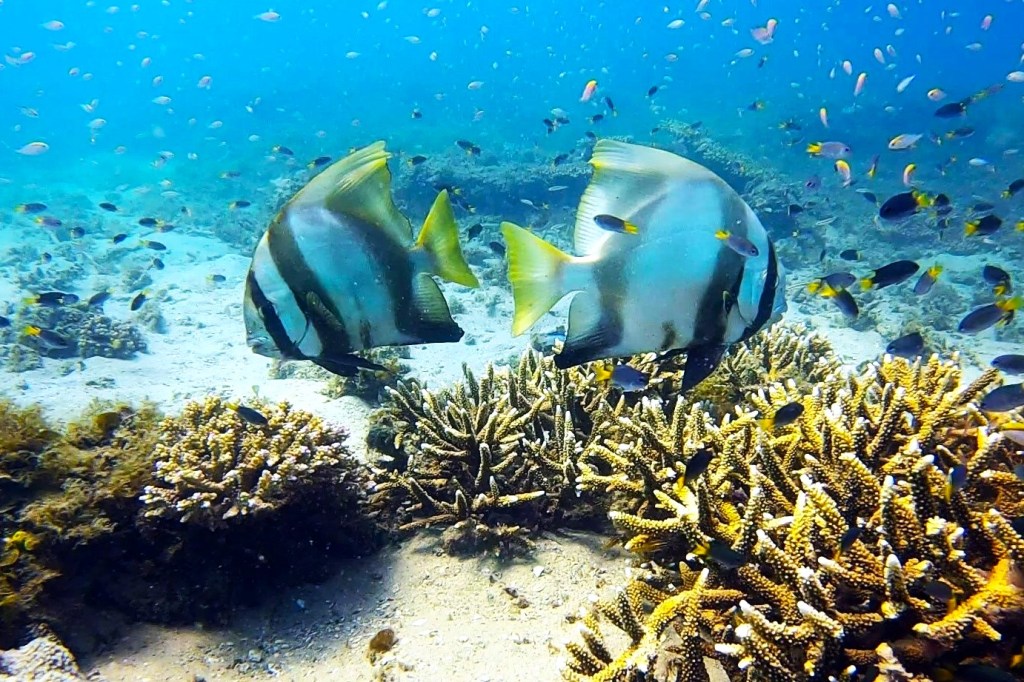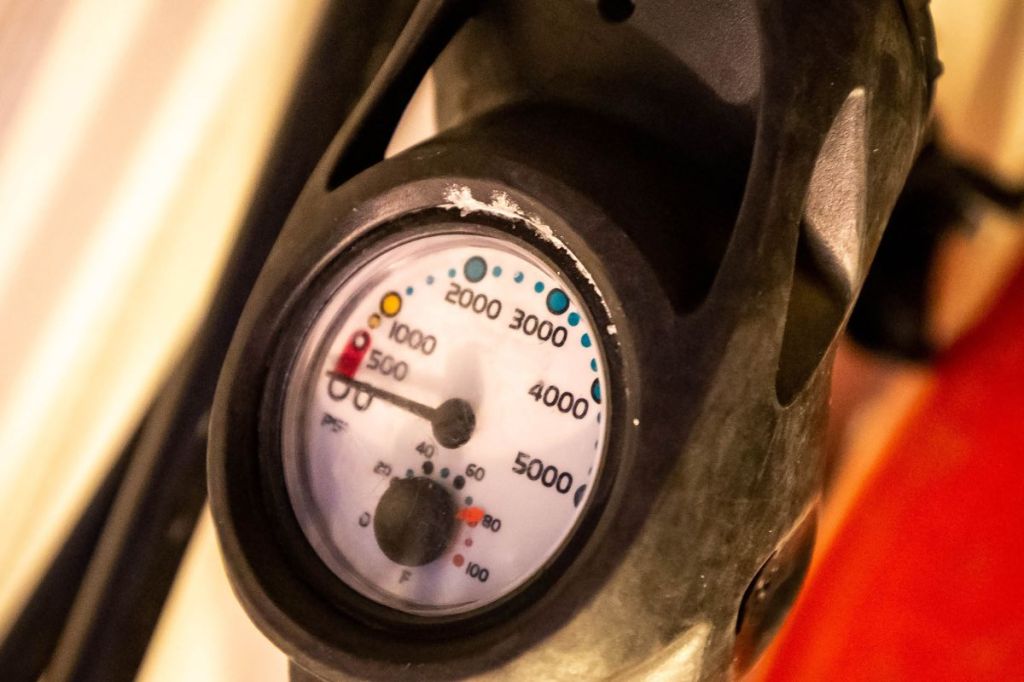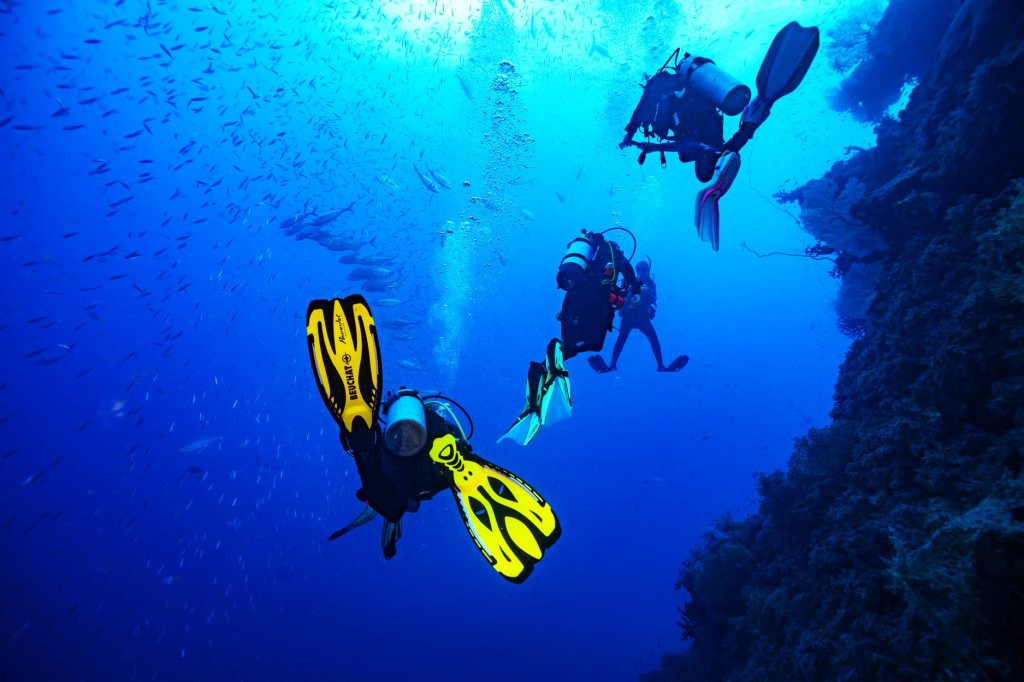Scuba diving can be an exciting and rewarding experience for Female Scuba Divers. The underwater environment presents unique challenges and risks and divers can face serious injuries or even death without the right safety precautions. In this post, I list 10 Essential Safety Rules that every Scuba Woman needs to be aware of.
Following these basic but Essential Safety Rules will help Senior Scuba Divers build confidence, dive safely, and enjoy their underwater experiences.
It’s Never Too Late to Become a Confident Scuba Woman – Take the Dive with Me, Tanya.
Essential Scuba Safety Tip 1 Breathe Never Hold Your Breath
Never hold your breath. When we dive, the volume of our lungs and the density of the air we breathe change as we encounter different amounts of water pressure at different depths. The deeper the dive, the denser the air and the greater the volume in our lungs. As divers begin to rise in the water column, the air in our lungs becomes less dense and begins to expand.
Breathing continuously allows this air to escape rather than expand and potentially rupture our lungs or send air bubbles into our bloodstream.

It is important to realize throughout the course of a dive, Scuba Women may unintentionally move upward in the water column, putting themselves at risk of lung expansion injuries. Lung expansion injuries can occur when a diver holds their breath while ascending. Symptoms can include pain, shortness of breath, and difficulty in breathing.
Practice breathing from your diaphragm, filling and emptying your lungs. A yoga practice on land will help your breathing underwater. Confident Scuba Women like to conserve air; breathing slowly, calmly, and continuously will help you do that.
Essential Scuba Safety Tip 2 Always Dive with a Buddy
Always dive with a buddy. Scuba diving is a buddy sport for a reason. We submerge ourselves into an alien world and are at risk of equipment malfunction, human error, and an unpredictable environment. We get to share our underwater adventures with our buddies, but we are also there for each other if anything should go wrong. Buddies have an alternate air source, can help problem-solve, spy potential hazards, and help each other surface safely.
Essential Scuba Safety Tip 3 Dive within your Limits and Training
I learned this one the hard way. I dived within my training but not within my limits. I tried to keep up with my more experienced dive buddies and foolishly dived in conditions I was not adequately experienced for. I was well beyond my limits with bad weather, rough surface conditions, new gear, and a strong current. It was a learning experience, but ultimately I put myself and my buddies at risk. I now never hesitate to say no to a dive if I feel mentally or physically compromised.

With each dive, I learn and grow as a Senior Scuba Diver. I almost always suffer nerves on a new dive site, but I have confidence in knowing my limits. It is also important to recognize your limits may change. If you go from diving weekly to once a year, it is likely you may find parts of your dive are no longer second nature or your fitness levels have changed. Refresher courses are great, as is extra training to help extend your diving limits.
Essential Scuba Safety Tip 4 Monitor your Air Gauge
I cannot stress enough the importance of monitoring your air gauge. All scuba divers want to return from a dive safely with adequate air. Scuba Women rely on their tanks to provide enough air for a dive as we explore a submerged terrain. It is up to us to monitor the amount of air in our cylinders.
Dives should be timed to ensure all divers surface with at least 50 bar (725 PSI) of air. A good rule of thumb is to allow 1/3 of the air for the dive out, 1/3 for the return, and 1/3 for safety.

The amount of air we breathe changes as a response to underwater pressures and environmental factors. Knowing the percentage of air used at different stages of a dive enables Confident Scuba Women to adjust their dive accordingly. If divers are using more air than in previous dives, they may steady their breathing, change kicking styles, move up in the water column, or shorten the dive.
Remember, the deeper Scuba Women are, the faster air is used. Less air is breathed at 10 (32ft) meters than at 30 meters (98 ft). On average, I monitor my air gauge every 10 minutes, usually at least 5 times throughout the course of a dive. I always check my air after the descent. If I have used more air than normal, I will adjust the dive plan accordingly and ensure I monitor my air closely.
For a 10-meter (33-ft) dive, I check the air gauge every 10-15 minutes. For 10 -20 meters (33-66 ft), I check the air gauge every 9 -12 minutes. For 20-30 meters (80-98 ft), I check the air gauge every 4-8 minutes.
These are conservative average checks. It is important divers check their air frequently and are able to return to the exit point of the dive with spare air.
I am very good at conserving air, but still check my air gauge regularly. Even on a stress-free shallow dive, I watch my gauge. I have no desire to run out of air underwater.
Essential Scuba Safety Tip 5 Always Dive with a Computer
A dive computer helps plan your dive, monitors your depth, and knows decompression limits and when and where safety stops are required. Invest in a dive computer; it logs your dives and keeps you safe. Scuba divers may hire everything else if they need to, but dive computers aren’t always available. Do not share a dive computer with your buddy. Your dive profiles may vary without either scuba diver realizing. If you have dived a couple of meters deeper than your buddy, you are putting yourself at risk of exceeding your NDLs (No Decompression Limits). Without the required decompression stops, you are at risk of Decompression Sickness, which can be fatal.

A dive computer helps Scuba Women make both a controlled descent and ascent. It also helps divers stay at the right depth in the water column when performing safety stops.
Essential Scuba Safety Tip 6 Stay Safe and Ascend Slowly
Dive computers have a built-in ascent rate. Follow your dive computer and ascend slowly – no more than 9 meters (30ft) per minute. Scuba divers should not be ascending faster than their smallest air bubbles. Completing a safety stop also helps to slow your ascent. Remember, the closer you are to the surface, the greater the changes in pressure. Slow your ascent for the final 5 meters. It is easy to lose buoyancy after the safety stop or relax and kick for the surface too quickly.
Decompression sickness, also known as the bends, occurs when a diver ascends too quickly, and nitrogen bubbles form in the body. This can cause joint pain, headaches, dizziness, pins and needles, a rash, paralysis, and even death.

Essential Scuba Safety Tip 7 Plan Your Dive and Dive Your Plan
Agree on maximum depth, dive time, when the dive will turn, where you are going, and who will lead the dive. Discuss what you will likely encounter and know what to do if you are separated, if you experience strong currents, meet nesting triggerfish, etc. Ask questions and raise concerns. What type of dive are you doing? Drift dive? A shallow or deep dive? Where are your entry and exit points? Are you following a line down or doing a free descent? Are there any potential dangers or threats? What is the course of action you need to take if you encounter a potential hazard?
A well-planned dive helps keep you safe and considers environmental conditions, weather, logistics, and timing. Review hand signals to ensure you can be understood underwater. Know the dive plan and dive the plan – knowledge helps keep you safe.
Essential Scuba Safety Tip 8 Never Scuba Dive when Sick
If in doubt about your health, consult a doctor. If you have a cold or are feeling unwell, don’t dive. It is disappointing to miss an eagerly anticipated dive, but it is never worth harming your body or risking your life.

If we are fighting an illness, our bodies do not need the added rigors of being underwater and under pressure. If you are suffering from a cold, it will be unlikely that you will be able to equalize your ears and sinuses. This could result in ear barotrauma or a reverse squeeze on your ascent. An ailing body is more likely to succumb to Decompression Sickness or even a possible heart attack. Do you really want to be vomiting into your regulator?
I warn against taking decongestants as they may cause anxiety during the dive or wear off, causing a reverse squeeze.
Have some hot soup, rest, and plan your next dive for when you are fit and healthy.
Essential Scuba Safety Tip 9 Be a Good Dive Buddy
Embrace the Buddy System and be a good dive buddy. Never get complacent, and always check your dive gear, know your buddy’s equipment, and complete a buddy check. If something goes wrong, it is often a series of minor issues that quickly become big issues. Remember BWRAF (BCD/Buoyancy; Weights; Releases; Air; Final Check) and adhere to it. Be aware of your buddy and what they may need from you, and make them aware of your needs.
Know the color of your buddy’s snorkel, wetsuit, and fins to avoid confusion underwater. Discuss the dive briefing with your buddy and ensure you have strategies, hand signals, and contingencies in place.

Complete a buoyancy check together on entering the water and establish neutral buoyancy once at depth.
Communicate with your buddy early and often to recognize and avert potential issues. When checking your air gauge, signal to your buddy to check their air, too.
Try to find a shared rhythm together so you have your own space but are still close by. Always know where your buddy is; if you observe any unusual behavior, check they are ok. Never be more than a few fin kicks away in case of an emergency. Enjoy sharing what you see with your buddy and comparing your experiences back on land.
Diving is a buddy sport – if the equipment is too heavy or the boat ladder too difficult, admit it and ask for help. After all, we are Senior Scuba Women. Enjoy scuba diving for the buddy sport it is.
Essential Scuba Safety Tip 10 Perform a Safety Stop at 5m (16ft)
Complete a safety stop as directed by your computer, usually at 5-6 meters (16-20ft) for a minimum of 3 minutes. Even after a shallow dive, it is best practice to complete a safety stop. It gives your body extra time to off-gas any excess nitrogen and slows your ascent, helping prevent Decompression Sickness (DCS).
IT’S NEVER TOO LATE – TAKE THE DIVE WITH ME, TANYA – HELPING WOMEN DIVE CONFIDENTLY
Want to be part of our powerful community? Subscribe to receive the latest posts straight to your inbox and join other women scuba diving with confidence 🙆♀️🙆♀️🙆♀️
If you liked this post or any other, please feel free to share using the buttons below.


AAA
LikeLiked by 1 person
Excellent Tips!
LikeLiked by 1 person
Well done,as retired pro I’ve seen too many break these simple rules to their cost
LikeLiked by 1 person